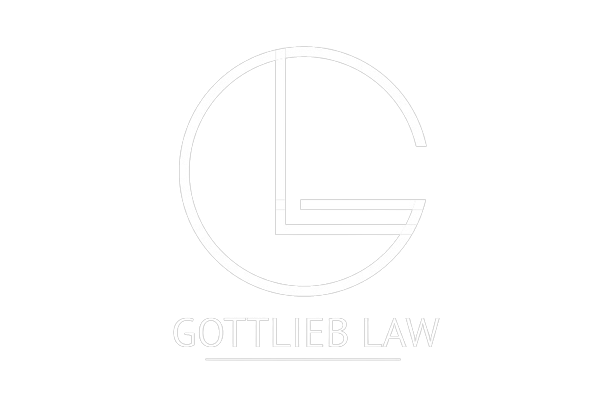Gottlieb Law, PLC provides this article for information purposes only and nothing herein creates an attorney-client relationship. You should not take any actions in reliance on any of the information contained herein without consulting with qualified legal counsel first and reading this article is not a proper substitute for seeking legal advice of your specific situation. Laws change over time and you should seek counsel to discuss any specific legal questions.
The real estate market in Arizona is rebounding, which means that many property investors are looking for a way to reduce their tax liability and maximize their return on investment. A popular approach to accomplishing this is through the utilization of a 1031 Exchange, a tax-deferment mechanism that allows property investors to reinvest proceeds from property sales into new property acquisitions, thereby deferring capital gains taxes.
What is a 1031 Exchange?
Section 1031 of the Internal Revenue Code offers a provision that enables real estate investors to sell their properties but reinvest the profits into other related properties while avoiding the immediacy of capital gains taxes that would normally occur post sale of the sold properties. It’s a popular tax deferment method that investors are legally able to use so long as they continue to reinvest their proceeds into the acquisition of new properties. Of note, this tax deferment method is limited to business or commercial acquisitions, and it cannot be applied to a personal or primary residence.
Benefits of a 1031 Exchange
The 1031 Exchange presents several benefits for real estate investors because it allows them to defer paying the typical 15%-30% in capital gains taxes on the sale of any investment property in their portfolio. This tax deferment can significantly increase an investor’s capital base for subsequent investments, thereby potentially increasing their return on investment.
What’s more, with a 1031 exchange in Arizona, investors have more liquidity to expand, enhance and diversify their real estate portfolios. By exchanging properties, investors can explore new ventures, shift assets between different geographical locations, and transition from high-maintenance properties to ones requiring less management. The 1031 Exchange, therefore, offers a strategic tool for property investors to grow their wealth and optimize their investment strategies.
Rules of a 1031 Exchange
There are certain rules that must be followed for a 1031 exchange in Arizona. For starters, investors and businesses must comply with the law and the properties that are exchanged have to be similar in the quality, grading and nature, or as the law defines, of a “like kind.” This enables investors to use this deferment with a wide assortment of property types ranging from vacant land to single family homes and even apartment complexes or commercial properties.
What’s more, investors are mandated to use something called a Qualified Intermediary (QI); who is tasked with taking the proceeds from one exchange, holding it in a trust and only allocating it toward the acquisition of the new property. This rule assures that the money isn’t ever allocated directly to the investor; and is instead reinvested in new properties, thus enabling the deferment of immediate taxation.
Timing is also crucial in a 1031 Exchange. There are two key deadlines that investors must meet:
- There is a 45 day timeline from the date of the sale of the first property to the date that the investor has to allocate application of the funds to a replacement property via writing to the QI.
- Investors have a 180 day timeline to close on the new property post sale of the original property.
Choosing The Right Property for a 1031 Exchange
Choosing the right property is the key to success with an Arizona 1031 exchange. Paramount is that the replacement property has to be of “like kind.” Examples include commercial real estate, rental properties, and undeveloped land held for investment. Of importance is the fact that a 1031 can not be used on a personal property holding or a primary residence. This is why an investor must carefully consider the nature and use of the potential replacement property when planning a 1031 Exchange.
Planning a 1031 Exchange
Planning a 1031 Exchange should take into account the law, its underlying principles and the need for thoroughness. Investors should consult with tax professionals or a team of experts, like those at Gottlieb Law, to determine if a 1031 Exchange will be in their best interest. Proper planning and execution of a 1031 Exchange can result in a more diversified and stronger portfolio when properly executed.
Common Misconceptions
One of the most commonly misunderstood facts about Arizona 1031 exchanges is that they are “tax-free.” In reality, a 1031 Exchange is a tax-deferral strategy, meaning investors will eventually have to pay taxes on their gains. Investors must also beware of schemes that promote ineligible properties for exchanges, such as primary homes or vacation homes, as these do not qualify for a 1031 Exchange.
Why Consider a 1031 Exchange in Arizona?
Arizona’s thriving real estate market makes it an ideal location for 1031 Exchanges. The state’s robust economy, growing population, and increasing property values have fueled a vibrant real estate market with potential for significant investment returns. By leveraging a 1031 Exchange, investors can take advantage of these favorable market conditions while also managing their tax liabilities.
Navigate 1031 Exchanges with an Experienced Lawyer
In the dynamic real estate market of Arizona, a 1031 Exchange provides a valuable tool for investors to optimize their investment returns and manage their tax liabilities. At Gottlieb Law, we leverage our extensive experience and unmatched determination to deliver exceptional results for our clients. Whether you’re new to real estate investing or an experienced investor looking to maximize your returns, we can assist you in navigating the complexities of real estate legal issues here in Arizona. Call our firm at 602-899-8188 or visit Gottlieb Law to submit your request online.
Gottlieb Law, PLC provides this article for information purposes only and nothing herein creates an attorney-client relationship. You should not take any actions in reliance on any of the information contained herein without consulting with qualified legal counsel first and reading this article is not a proper substitute for seeking legal advice of your specific situation. Laws change over time and you should seek counsel to discuss any specific legal questions.

